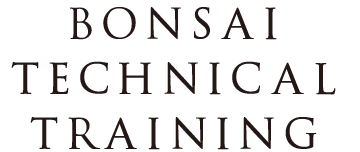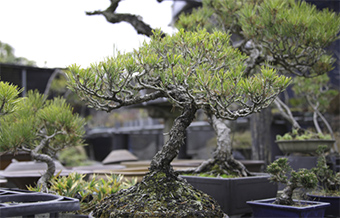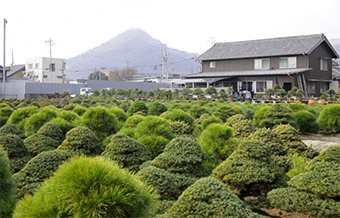Training Overview
Bonsai Technical Training at The Home of Takamatsu Bonsai
"Bonsai Technical Training at The Home of Takamatsu Bonsai" is a training program sponsored bythe Kagawa Prefecture Bonsai Production Promotion Council that gives participants an opportunity tolearn techniques directly from bonsai producers in the Takamatsu area.
The popularity of "Bonsai" has spread throughout the world. Its techniques can be learned directlyfrom bonsai producers from the city of Takamatsu, Kagawa Prefecture, one of the leading pine bonsaiproducing areas in Japan.
This program is not only for people who are engaged in the bonsai industry or who wish to work in abonsai-producing center but is intended for a broad range of people, regardless of nationality, includingpeople who simply have an interest in bonsai and people who want to learn techniques to improve theirpersonal skills. The program aims to "develop human resources," "promote production area technology,"and "disseminate information about The Home of Takamatsu Bons ai." Of course, beginners are verymuch welcome, too.
In the bonsai producing center of Takamatsu, you, as a trainee , can learn techniques and acquireknowledge about how to raise, train, and even manage bonsai each day, according to a plan that fitsyour wishes.
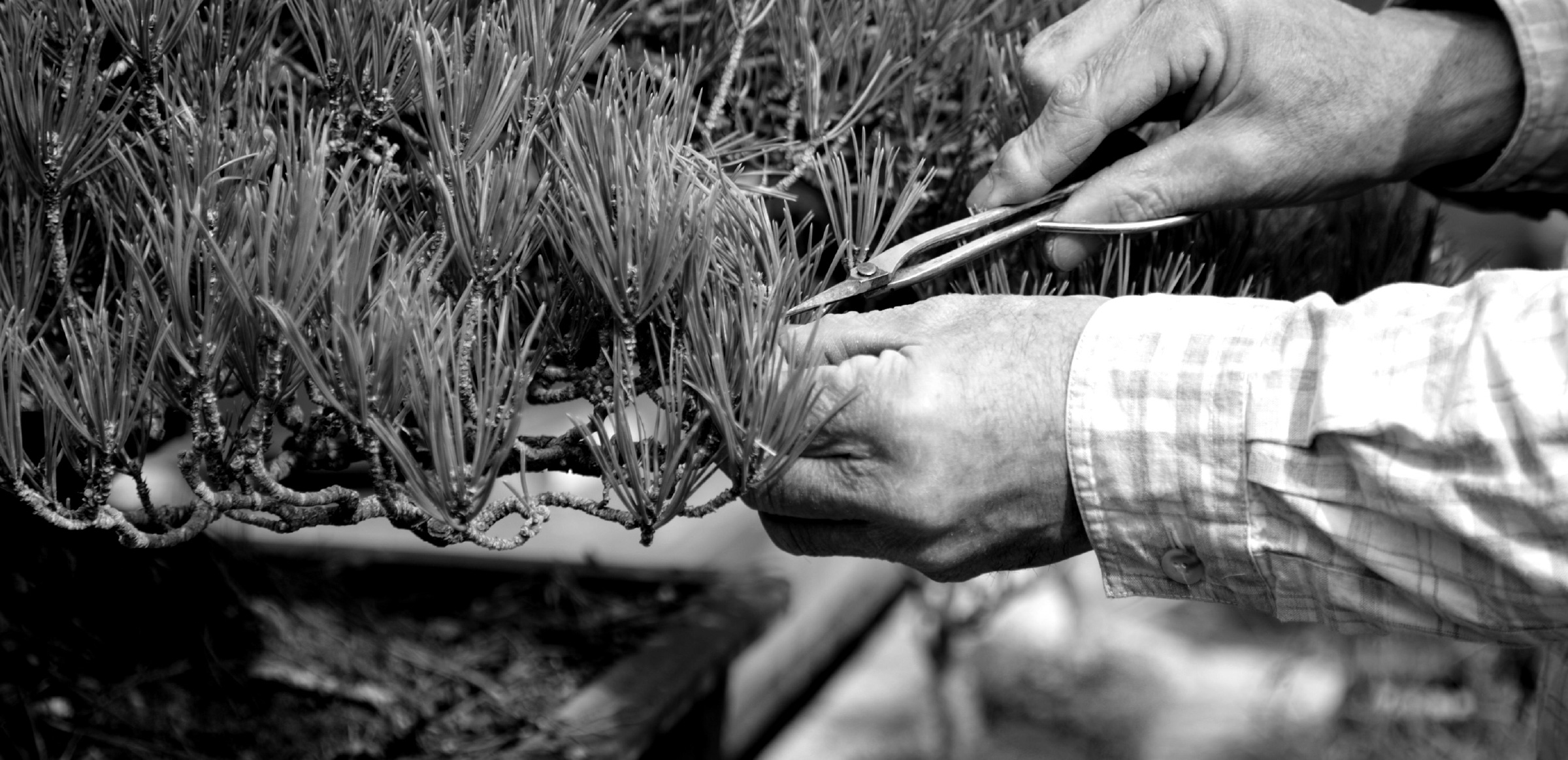
Bonsai of Takamatsu
Kagawa Prefecture Bonsai Production and The Home ofTakamatsu Bonsai
The history of bonsai in Kagawa Prefecture is long. This art is said to have begun 200 years ago inthe Edo period, where native trees and shrubs growing in the mo untains and along the coast wereplanted in pots and sold.
With very little difference in temperature throughout the year, and with long hours of sunshine andminimal rain, the Seto Inland Sea climate was suitable for pine bonsai. Also, since pruning, grafting,and other techniques used in the production of fruit trees and mulberry plants were available, bonsaiproduction in Kagawa developed significantly.
The main producing areas are Kinashi and Kokubunji in the weste rn part of the city of Takamatsu.While black pine (kuromatsu) is the focus, species such as brocade pine (nishikimatsu) and white pine(goyomatsu) are also cultivated.
Takamatsu is one of the leading bonsai-producing areas in Japa n. Producers cover the entireprocess, from raising the seedling to training it into a bonsai. Thus, the area features many bonsainurseries. Rows of bonsai decorate shelves, and bonsai are meth odically planted in fields. Theexpansive landscape provides clear evidence that Takamatsu is o ne of Japan's leadingbonsai-producing areas.
Also, Takamatsu bonsai are exported to Taiwan, the EU, and a n umber of other countries andregions throughout the world.
| 2012 | 2013 | 2014 | 2015 | |
|---|---|---|---|---|
| Area under cultivation (a) | 1,216 | 1,216 | 1,234 | 1,202 |
| Quantity shipped (trees) | 80,000 | 79,000 | 74,000 | 58,000 |
| Export inspections (trees)*¹ | 14,885 | 6,105 | 8,349 | 6,922 |
*¹Number of export quarantine inspections performed at the Sakaide Substation of the Kobe Plant Protection Station (January 1 to December 31)
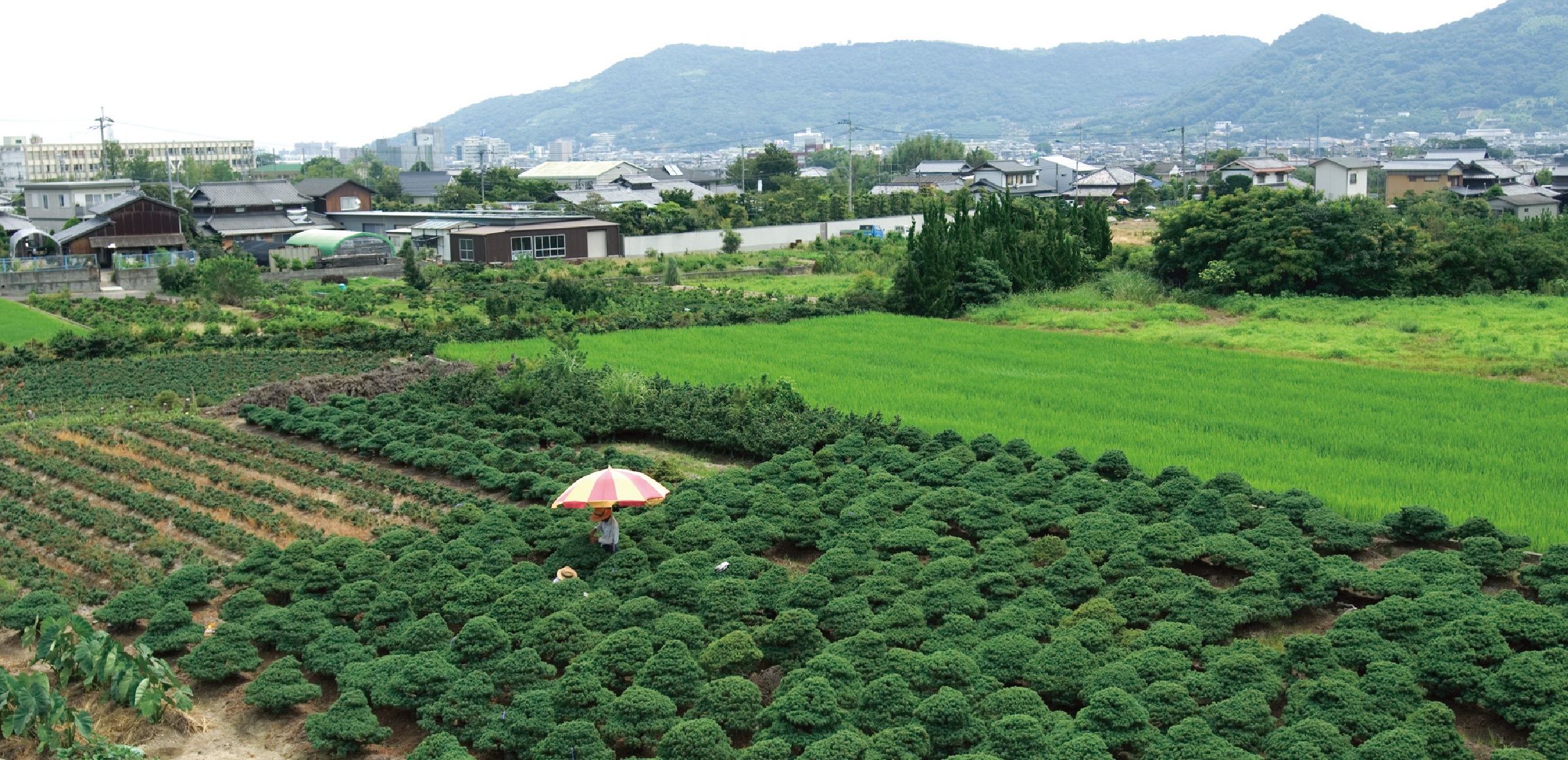
Training Information
| Course fee | 5,000 yen/day (tax included). However, please consult with the staff if you desire a long-termplan having a 2-week or longer training period. Information reg arding payment of the course feewill be included when the Training Approval Notice is sent. |
|---|---|
| Training period | Please choose your desired training period when you apply. Available training periods are shownin the training calendar. However, periods may change at the convenience ofthe trainer. |
| Content of training | Training will be conducted under the guidance of an instructor at a bonsai nursery. The contentof the training at each of the nurseries is set up to reflect the wishes of the trainee. If there issome specific type of training you desire, enter it on the appli cation form. Some work variesaccording to the season (pages 4 and 5). This gives trainees op tions as to th e content andtechniques they can learn. However, certain options may not be available, depending on theconvenience of the trainer and other factors. |
| Eligibility | Must be 18 or older. |
| Number of trainees | Up to 10 persons (in order of application) in a given period (2 or more overlapping days) |
| Important information |
|
How to Apply
| Application period | Please apply at least 3 weeks priorPlease apply at least 3 weeks prior to your desired training date. If you are from outside Japan,please apply for training at least 2 months in advance. |
|---|---|
| Where to apply | JA Kagawa Prefecture Fureai Center, Kokubunji Branch 744-1 Shinmyo, Kokubunji-cho, Takamatsu, Kagawa Prefecture 769-0104 E-mail: syunsyou-en@shirt.ocn.ne.jp or kojibonsai1223@icloud.com (Hiramatsu Shunshoen) *Please apply from E-mail. |
| Admission | After your application is received, we will check and make adj ustments regarding your trainer,content of training, and desired schedule, and contact you acco rding to your preferred method(mail or e-mail). As we make adjustments, you will be asked to submit documentation that verifiesyour identity (such as copies of your driver’s license and passport [if from overseas]). After thecourse content has been determined, we will sendyou a Training Approval Notice (PDF file if bye-mail) and course outline. If, however, you are fromoverseas, contact will be limited to e-mail. *E-mail will be sent from the address shown under"Where to apply." Please ensure that yoursettings will allow e-mail to be received from thataddress. |
Course Content by Season
Just as the bonsai themselves change with the time and season, so does thework that is involved in caring for them. Typical work that goe s on during eachseason and events that are held in the producing areas are intr oduced below.
Entire period(March to June, September to February)
Throughout the entire period, you can acquire basic knowledge of bonsai (definition of bonsai, basic treeforms, basic management, ways to decorate, etc.).
Spring(March to May)
Spring marks the end of a bonsai tree's winter dormancy and the beginning of activity. In this period, buds begin to appear and bonsai transplanting is optimal.
- Styling work(wiring)
- Styling work, which includes pruning, wiring, branchtraining, shaping, etc., is an important fundamentalbonsai-making task, as it forms the shape of the overall tree.Wiring involves wrapping copper or aluminum wire aroundthe trunk and branches in order to correct the direction andangle of the branches and to shape the bonsai to a nearlyideal form. This course covers fundamentals to practicalapplications, including basic procedures for wrappingbranches with wires, as well as procedures for pullingbranches downward and giving shape to bonsai.
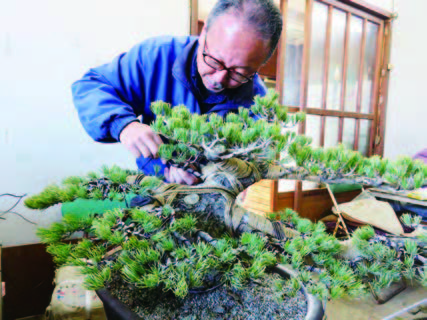
- Needle plucking/leaf trimming
- Performed from winter to spring, this work involvesremoving unnecessary pine needles and leaves. Old pineneedles and leaves from past years are removed to give thebranch base more sunlight and ventilation. It also promotesgrowth and balances overall tree vigor and strength.
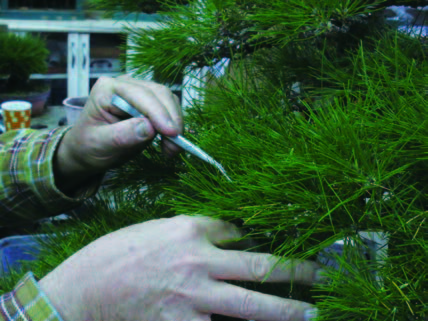
- Bud pinching
- Also called the short leaf method, this technique involvespinching or cutting off new pine buds in order to adjust thelength and vitality of pine needles.
- Transplanting
- Once every 4 to 5 years when a bonsai's drainage hasworsened, the roots are cut and the tree is transplanted intonew soil. Over time, the roo ts inside a bonsai pot will gro wlong and tangle, and the aging soil will prevent air passage.Therefore, it is periodically necessary to remove bonsai fromtheir pots, cut off unneeded roots, and change the soil.
- Kinashi Green Fair 21
- Large exhibition and sale of bonsai trees held in April each year for 3 days at the Kinashi Ueki Bonsai Center.
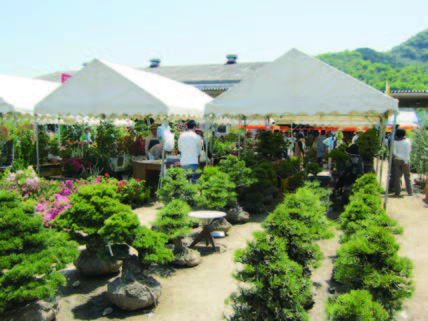
- Kokubunji Bonsai Center Spring Festival
- Held in April each year for 2 days at the JA Kagawa Prefecture Kokubunji Bonsai Center. Bonsai exhibits, spot sales, auctions, and bonsai classes take place.
Summer(May to August)
Summer is the time when leaves grow thick and flourish. Buds ar e pinched/removed at this time to formthe future shape of bonsai. Also, it is the season when water m anagement must be given the mostattention.(Please note that training is not offered in the summer months of July and August.)
- Bud pinching
- Styling work(wiring)
- Needle plucking/leaf trimming
- Shelf decorating and viewing
- Methods used to decorate, view, and appreciate bonsai areimportant elements in the enjoyment of bonsai. A number ofexhibitions and other e vents are held in the fall and winter,making it the exhibition season.
- Kokubunji Bonsai Center Fall Festival
- Held in September each year for 2 days at the JA KagawaPrefecture Kokubunji Bonsai Center. Bonsai exhibits, spot sales,auctions, and bonsai classes take place.
- Kinashi Bonsai Gardening Festival
- Held in late October each year for 3 days at the Kinash i UekiBonsai Center in K agawa Pr efecture. Bonsai mas terpieceexhibits, spot sales, demonstrations, and other events take place.
- Green Festa Kokubunji
- Held in late October each year for 3 days in TachibananookaSports Park. Enthusiasts from within and outside the prefecturewill enjoy masterpiece exhibits, shohin bonsai exhibitions, bonsaiclasses, spot sales, and other events.
- Styling work(wiring)
- Needle plucking/leaf trimming
- Transplanting
- Shelf decorating and viewing
Fall(September to November)
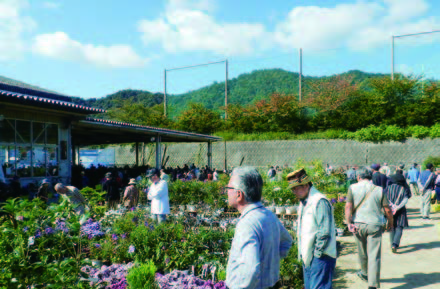
Fall is optimal for pruning and styling. The shape of the bons ai is prepared for the following year. Also,events such as exhibitions and spot sales are held in the Kinas hi and Kokubunji areas at this time. Theseevents offer great opportunities to find unexpected bargains and masterpieces of the region.
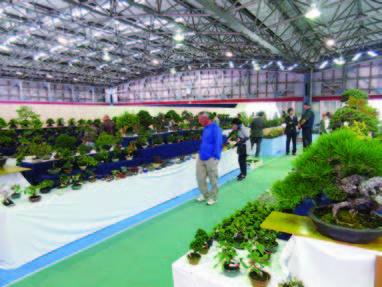
Winter(December to February)
For bonsai, winter is a dormant season when activity weakens.During this time, plans are made for spring and thereafter, andstyling, needle plucking, leaf trimming, and other work is performed.
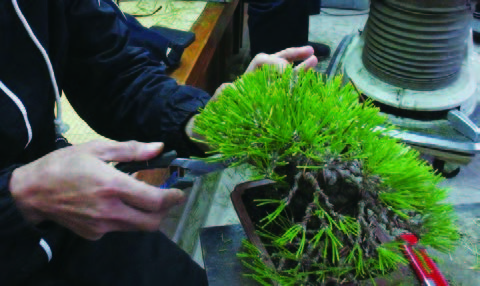
Bonsai Technical Training at The Home of Takamatsu Bonsai:
Training Calendar
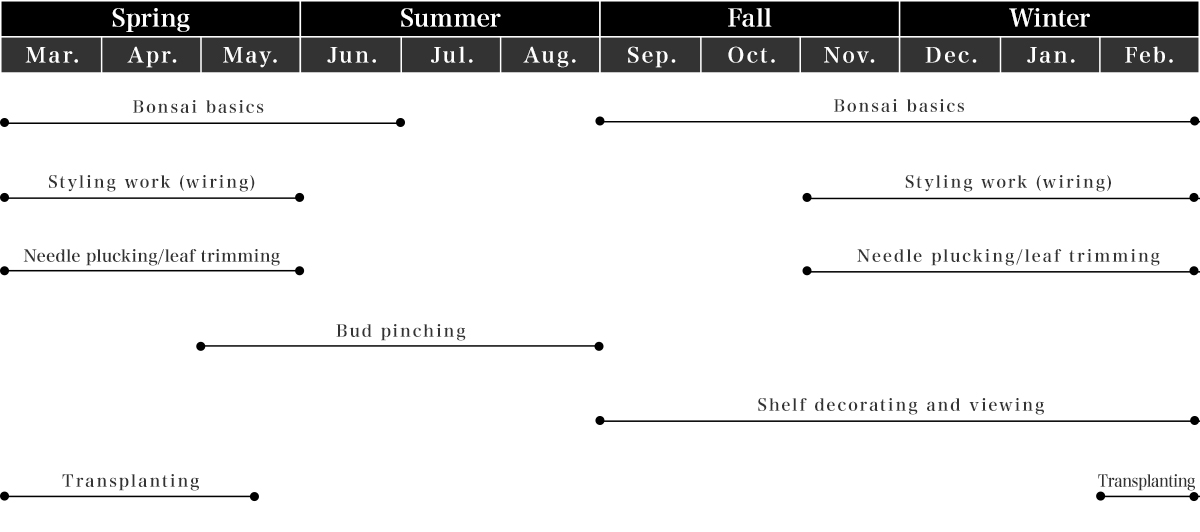
Bonsai Nurseries that Offer Training
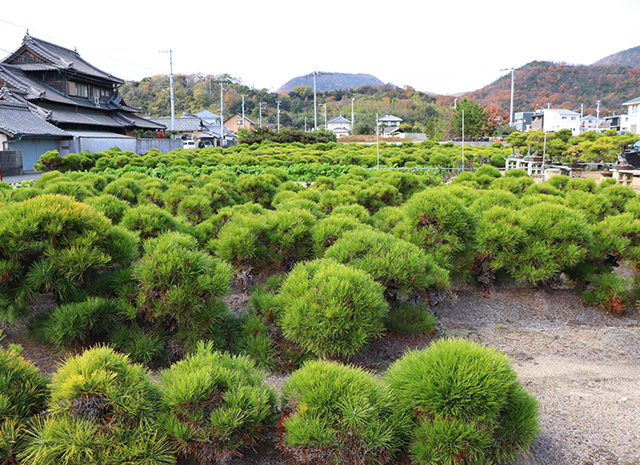
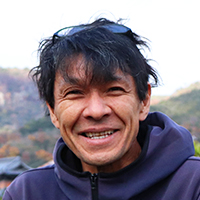
Hiramatsu ShunshoenKoji Hiramatsu
2365-2 Nii, Kokubunji-cho, Takamatsu 769-0101
TEL:+81-87-874-0335
E-mail URL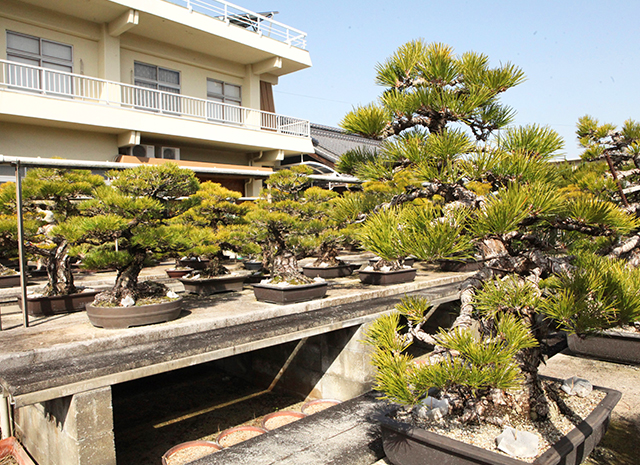
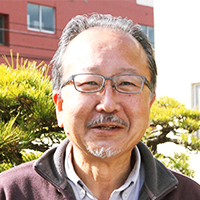
Oro KyokushoenSatoru Oro
51 Sato, Kinashi-cho, Takamatsu 761-8023
TEL:+81-87-881-2846
E-mail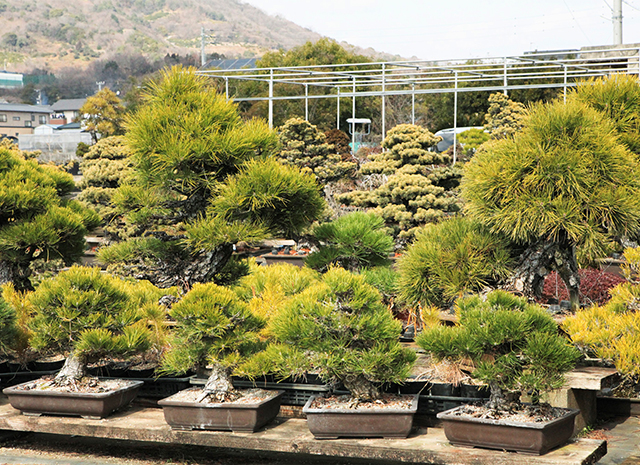
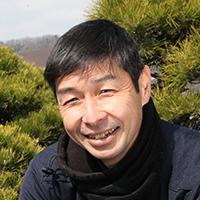
Matsuda SeishoenMitsuo Matsuda
165-2 Sato, Kinashi-cho, Takamatsu 761-8023
TEL:+81-87-881-2947
E-mail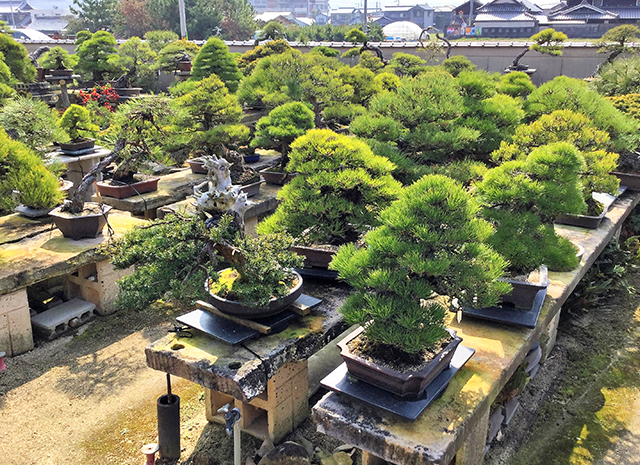
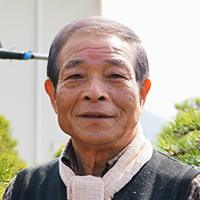
SeijuenKiyoshi Hiramatsu
1987-3 Nii, Kokubunji-cho, Takamatsu 769-0101
TEL:81-87-874-3052
Access to Kinashi and Kokubunji
From Tokyo to Takamatsu
| Narita Airport | Train/1 hr 30 min | Haneda Airport | Domestic flight/1 hr 30 min | Takamatsu Airport |
From Osaka to Takamatsu
| Shin-Osaka Station | Shinkansen/1 hr | Okayama Station | Rapid train/1 hr | Takamatsu Station |
| Kansai International Airport | Limousine bus/3 hr 30 min | Takamatsu Station |
After arriving in Takamatsu
| Takamatsu Airport | Limousine bus/45 min | Takamatsu Station | Train/5 min | Kinashi Station (Kinashi-cho) |
Train/4 min | Hashioka Station (Kokubunji-cho) |
If you have questions regarding Bonsai Technical Training at The Home of Takamatsu Bonsai, please contact the Kagawa Prefecture Bonsai Production Promotion Council.
Kagawa Prefecture Bonsai Production Promotion Council
c/o JA Kagawa Prefecture Fureai Center Kokubunji
744-1 Shinmyo, Kokubunji-cho, Takamatsu, Kagawa Prefecture 769-0104


